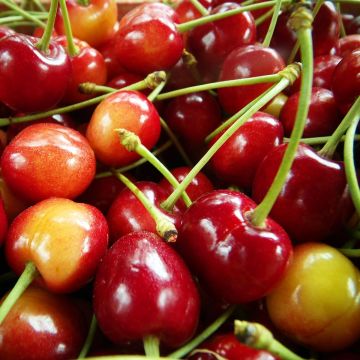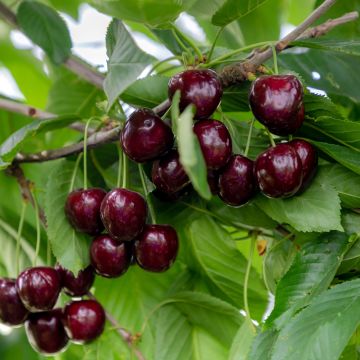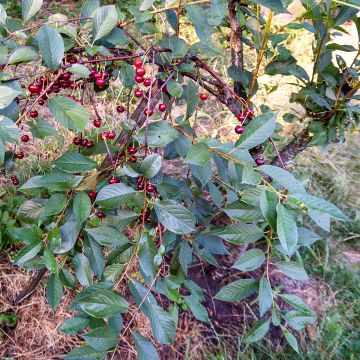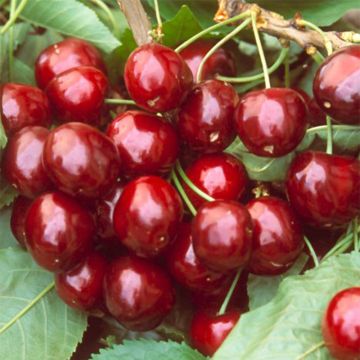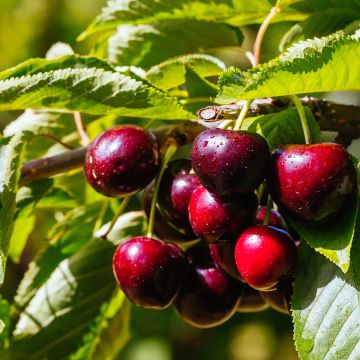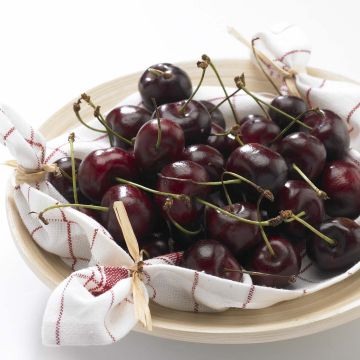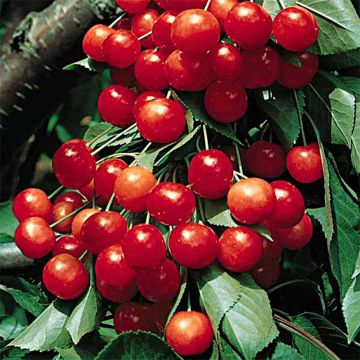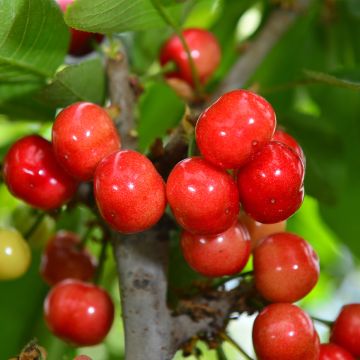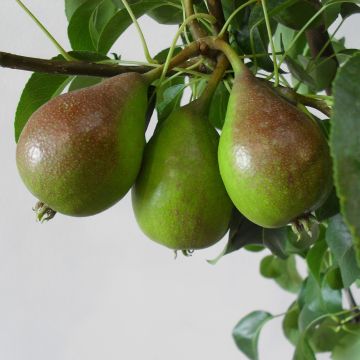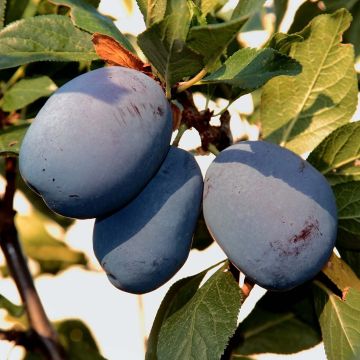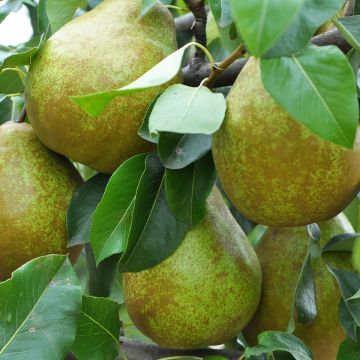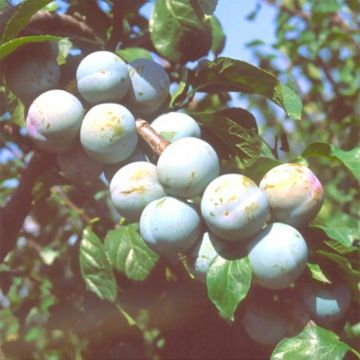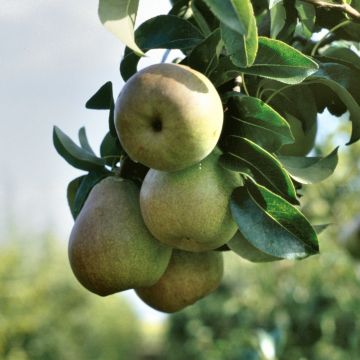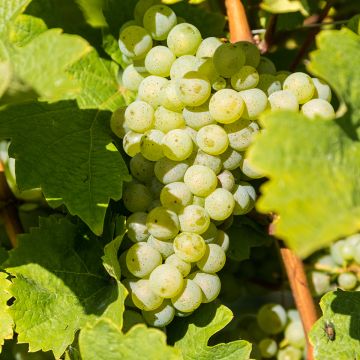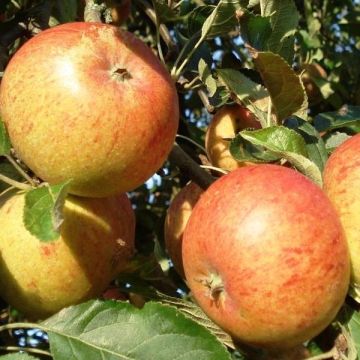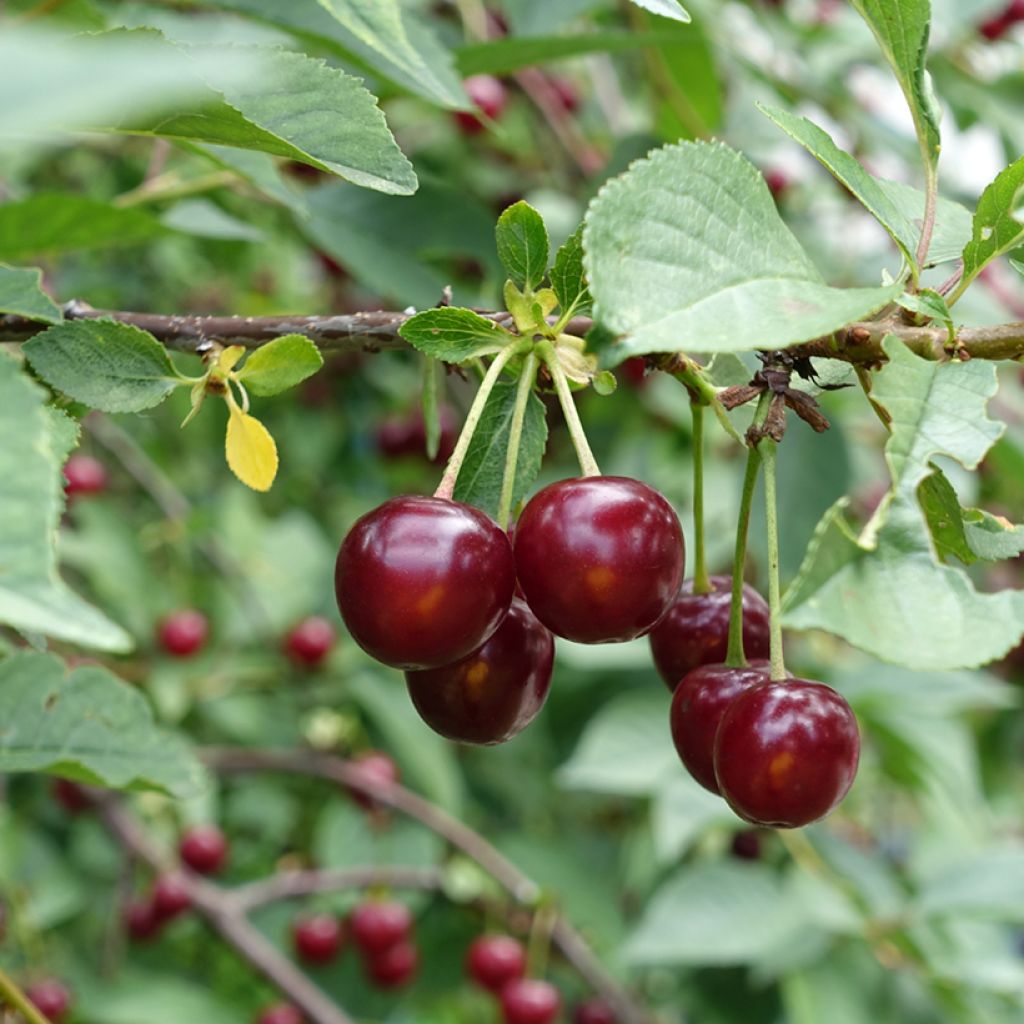

Cerisier griottier Guindoux des Charentes Bio
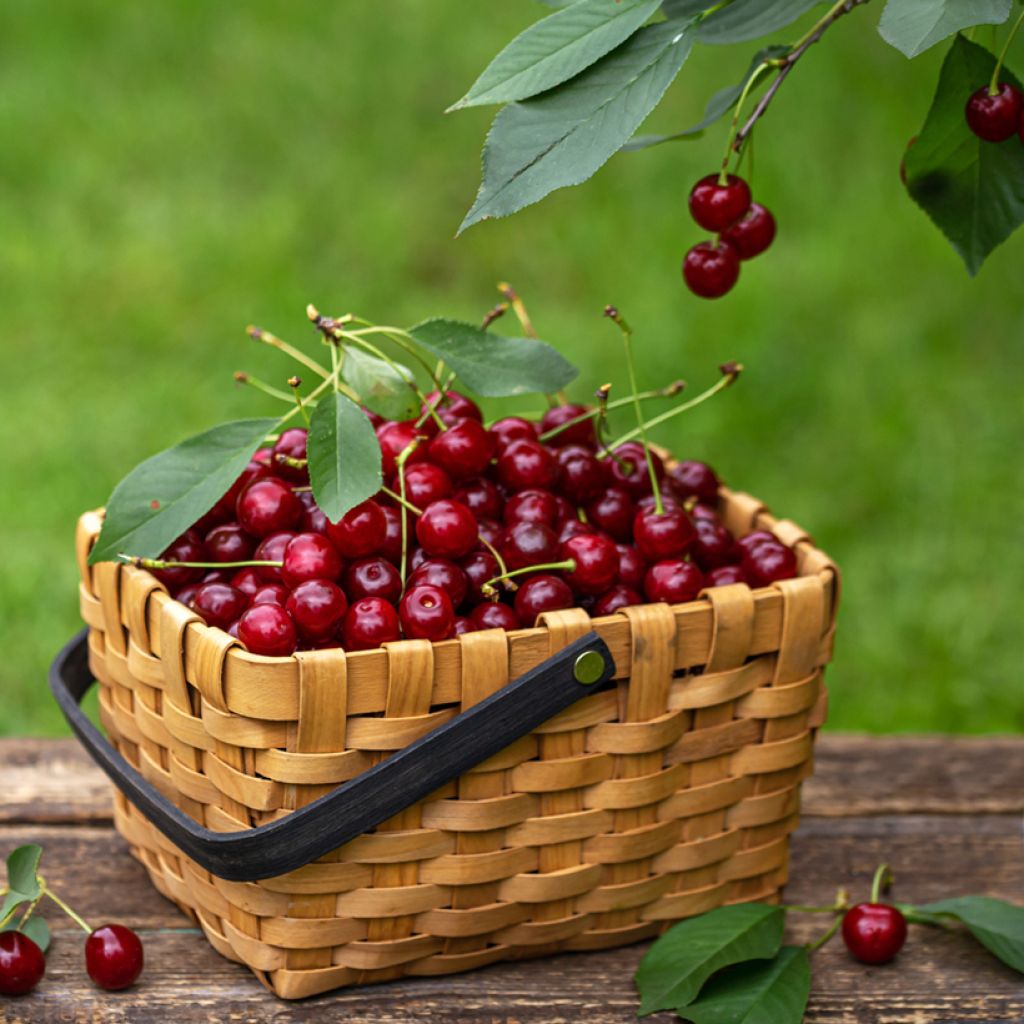

Cerisier griottier Guindoux des Charentes Bio
Prunus cerasus Guindoux des Charentes - Tart Cherry Tree
Prunus cerasus Guindoux des Charentes
Sour Cherry, Tart Cherry, Dwarf Cherry, Morello Cherry
Special offer!
Receive a €20 voucher for any order over €90 (excluding delivery costs, credit notes, and plastic-free options)!
1- Add your favorite plants to your cart.
2- Once you have reached €90, confirm your order (you can even choose the delivery date!).
3- As soon as your order is shipped, you will receive an email containing your voucher code, valid for 3 months (90 days).
Your voucher is unique and can only be used once, for any order with a minimum value of €20, excluding delivery costs.
Can be combined with other current offers, non-divisible and non-refundable.
Home or relay delivery (depending on size and destination)
Schedule delivery date,
and select date in basket
This plant carries a 6 months recovery warranty
More information
We guarantee the quality of our plants for a full growing cycle, and will replace at our expense any plant that fails to recover under normal climatic and planting conditions.
Description
The Organic Guindoux Cherry Tree from Charentes is a variety that produces a medium-sized, kidney-shaped fruit, measuring 2 to 2.5 cm (1in) in diameter (resembling a bean). Its thin skin is uniformly reddish-black, finely dotted with grey. Its deep red flesh surrounds a round stone that contains an almond, the seed. With its soft, juicy, highly aromatic, slightly sweet and particularly tart pulp when ripe, this Morello cherry has many culinary uses. Harvest throughout July and eat or process the fruits right after picking. Its good cold resistance and its adaptability to all types of soils, except for excessively clayey ones, mean you can grow the Guindoux Cherry Tree in all regions. The fruits of this variety are highly resistant to cherry fruit flies and are rarely attacked by birds.
Prunus cerasus belongs to the Rosaceae family, like the Sweet Cherry tree (Prunus avium). Also known as the Sour Cherry or Tart Cherry, it is native to Asia Minor and has been widely grown in Europe since ancient times.
The Guindoux Cherry Tree variety is mainly cultivated in the southern region of Charentes. This cherry tree forms a small, semi-erect tree, spreading with age, reaching approximately 4 to 5 metres (13 to 16 feet) high and 3 to 4 metres (10 to 13 feet) wide at maturity, with numerous diverging and trailing branches. Its reddish-brown wood is a characteristic feature of the cherry tree family. Its habit is well-suited for free-form shapes on half-standards or low goblet forms. The deciduous foliage consists of large, alternate, obovate, irregularly toothed, shiny green leaves that take on autumnal shades of brownish-orange. Flowering occurs in the second half of April, before the appearance of the leaves, which generally protects it from frost. The pure white, 2 to 3 cm (1in) diameter flowers are single and grouped in clusters. They can be destroyed by frost from -2 to -3°C. It is a remarkably decorative blossom in spring, particularly rich in nectar and pollen. A hardy tree that can withstand temperatures as low as -20°C, it is suitable for cultivation in all regions, including high altitudes. This variety is self-fertile, so it does not require a companion to bear fruit, but the presence of another cherry tree variety nearby will increase the yield.
The Guindoux Cherry offers a harvest that can be more or less abundant depending on the year, and can exhibit alternate bearing, allowing the tree to replenish its reserves. Fruit production becomes optimal after 6 to 7 years. The fruit is attached to the branch by a relatively short petiole, measuring 2 to 2.5 cm (1in) in length. Starting from early July, if the sour cherries are picked when fully ripe, by pulling downwards, the fruits can be harvested without the stone, as it remains attached to the peduncle on the branch. When fully ripe, the juice of the fruits stains hands and clothing. An adult sour cherry tree (between 10 and 20 years old) produces an average of 30 to 50 kilograms of fruit per year. This sour cherry is very juicy, and tangy in flavour and can be enjoyed raw, but its flavours are best revealed when cooked or processed. It is excellent for making clafoutis, cakes, crumbles, or pies, and as an accompaniment to savoury dishes with white meats (turkey, chicken, veal, etc.) or tagines. It is also perfect for making jams, compotes, juices, or preserved in syrup. Not to mention the famous sour cherry eau-de-vie, to be consumed in moderation.
Its content of vitamins A, B, and C, phenolic antioxidants, potassium, calcium, and magnesium, with a significant iron contribution, make the sour cherry a healthy choice. The fruits can only be stored for a few days at room temperature. However, they can be frozen once washed, dried, and pitted or used for canning.
Due to its popular fruits, the sour cherry is perfect in the garden, planted on a lawn, at the back of a flower bed, in an orchard, or in a fruiting hedge. Among a wide range of cherry trees, it is easy to find the variety that best suits one's desires.
Prunus cerasus Guindoux des Charentes - Tart Cherry Tree in pictures
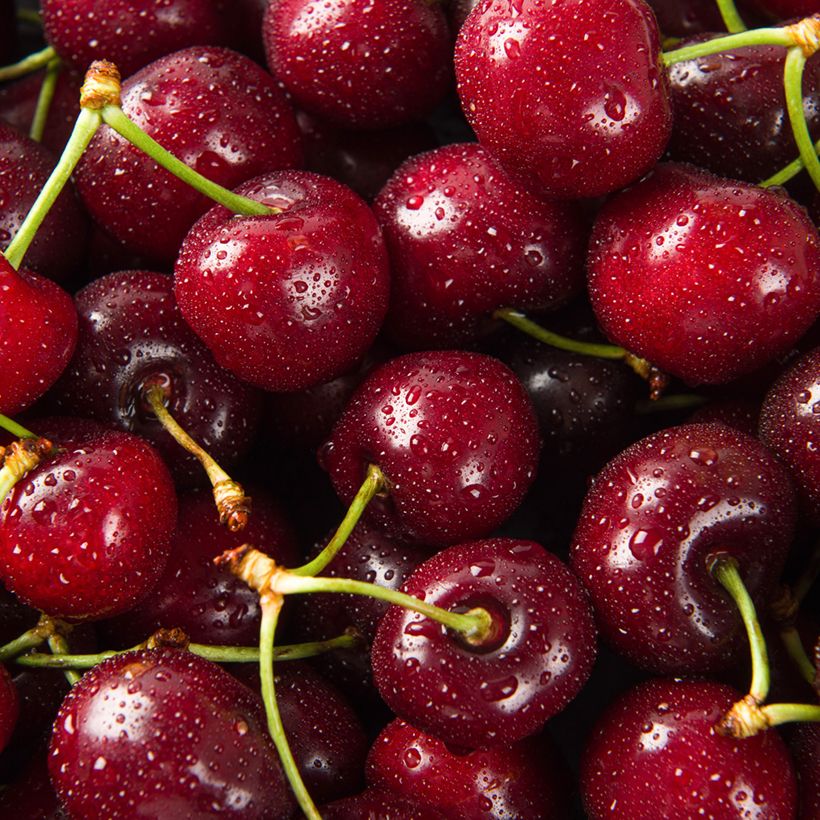

Plant habit
Fruit
Flowering
Foliage
Botanical data
Prunus
cerasus
Guindoux des Charentes
Rosaceae
Sour Cherry, Tart Cherry, Dwarf Cherry, Morello Cherry
Cultivar or hybrid
Other Cherry trees
View all →Planting and care
The Organic Charentes Guindoux Cherry Tree grows in all types of soil, acidic or chalky. It prefers moist, light soils and dislikes heavy and clayey soils. Choose a sunny location. To limit the risk of late frost on the flowers, it is best to plant the Cherry Tree in a sheltered position, facing west and protected from cold winds in regions that experience spring frosts. Planting is best done in autumn or in winter, outside the freezing period. If you plant multiple trees, space them 7 to 10 m (23 to 33ft) apart for "standard" cherries, 5 to 7 m (16 to 23ft) apart for "half-standard" cherries, and 4 to 5 m (13 to 16ft) apart for bush and spindle trees.
Loosen the soil deeply and remove stones and unwanted weeds. Add some sand to improve drainage. Dig a hole 4 to 5 times the size of the root ball. Make sure to keep the subsoil on one side and the topsoil on the other. Mix bonemeal or well-rotted compost or potting soil with the subsoil and pour this mixture into the planting hole. Install a stake. Place the root ball, cover it with the topsoil and firm it down. Water generously (about 10 litres). Position your tie system, crossing it in a figure of 8, so that the trunk and stake do not rub against each other.
The cherry tree can be subject to various diseases and pests. Against grey rot (velvety rot on the fruits) and brown rot (wilting of the flowers and rotting of the fruits on the tree), remove and burn the affected parts as a curative measure, and as a preventive measure, spray Bordeaux mixture or decoctions of horsetail or garlic in early spring and autumn. Against bacterial canker (wilting of flower clusters, brown spots, bark deformation), spray Bordeaux mixture. As for pests, cherry fruit fly or fruit worm can be controlled preventively by installing yellow cardboard discs covered with glue in spring, pheromone traps (trapping male insects), or a Drosophila trap, which can be easily made from a plastic bottle. In case of black aphid attack, spray a mixture of water and black soap or water and vegetable oil.
Planting period
Intended location
Care
Planting & care advice
This item has not been reviewed yet - be the first to leave a review about it.
Similar products
Haven't found what you were looking for?
Hardiness is the lowest winter temperature a plant can endure without suffering serious damage or even dying. However, hardiness is affected by location (a sheltered area, such as a patio), protection (winter cover) and soil type (hardiness is improved by well-drained soil).

Photo Sharing Terms & Conditions
In order to encourage gardeners to interact and share their experiences, Promesse de fleurs offers various media enabling content to be uploaded onto its Site - in particular via the ‘Photo sharing’ module.
The User agrees to refrain from:
- Posting any content that is illegal, prejudicial, insulting, racist, inciteful to hatred, revisionist, contrary to public decency, that infringes on privacy or on the privacy rights of third parties, in particular the publicity rights of persons and goods, intellectual property rights, or the right to privacy.
- Submitting content on behalf of a third party;
- Impersonate the identity of a third party and/or publish any personal information about a third party;
In general, the User undertakes to refrain from any unethical behaviour.
All Content (in particular text, comments, files, images, photos, videos, creative works, etc.), which may be subject to property or intellectual property rights, image or other private rights, shall remain the property of the User, subject to the limited rights granted by the terms of the licence granted by Promesse de fleurs as stated below. Users are at liberty to publish or not to publish such Content on the Site, notably via the ‘Photo Sharing’ facility, and accept that this Content shall be made public and freely accessible, notably on the Internet.
Users further acknowledge, undertake to have ,and guarantee that they hold all necessary rights and permissions to publish such material on the Site, in particular with regard to the legislation in force pertaining to any privacy, property, intellectual property, image, or contractual rights, or rights of any other nature. By publishing such Content on the Site, Users acknowledge accepting full liability as publishers of the Content within the meaning of the law, and grant Promesse de fleurs, free of charge, an inclusive, worldwide licence for the said Content for the entire duration of its publication, including all reproduction, representation, up/downloading, displaying, performing, transmission, and storage rights.
Users also grant permission for their name to be linked to the Content and accept that this link may not always be made available.
By engaging in posting material, Users consent to their Content becoming automatically accessible on the Internet, in particular on other sites and/or blogs and/or web pages of the Promesse de fleurs site, including in particular social pages and the Promesse de fleurs catalogue.
Users may secure the removal of entrusted content free of charge by issuing a simple request via our contact form.
The flowering period indicated on our website applies to countries and regions located in USDA zone 8 (France, the United Kingdom, Ireland, the Netherlands, etc.)
It will vary according to where you live:
- In zones 9 to 10 (Italy, Spain, Greece, etc.), flowering will occur about 2 to 4 weeks earlier.
- In zones 6 to 7 (Germany, Poland, Slovenia, and lower mountainous regions), flowering will be delayed by 2 to 3 weeks.
- In zone 5 (Central Europe, Scandinavia), blooming will be delayed by 3 to 5 weeks.
In temperate climates, pruning of spring-flowering shrubs (forsythia, spireas, etc.) should be done just after flowering.
Pruning of summer-flowering shrubs (Indian Lilac, Perovskia, etc.) can be done in winter or spring.
In cold regions as well as with frost-sensitive plants, avoid pruning too early when severe frosts may still occur.
The planting period indicated on our website applies to countries and regions located in USDA zone 8 (France, United Kingdom, Ireland, Netherlands).
It will vary according to where you live:
- In Mediterranean zones (Marseille, Madrid, Milan, etc.), autumn and winter are the best planting periods.
- In continental zones (Strasbourg, Munich, Vienna, etc.), delay planting by 2 to 3 weeks in spring and bring it forward by 2 to 4 weeks in autumn.
- In mountainous regions (the Alps, Pyrenees, Carpathians, etc.), it is best to plant in late spring (May-June) or late summer (August-September).
The harvesting period indicated on our website applies to countries and regions in USDA zone 8 (France, England, Ireland, the Netherlands).
In colder areas (Scandinavia, Poland, Austria...) fruit and vegetable harvests are likely to be delayed by 3-4 weeks.
In warmer areas (Italy, Spain, Greece, etc.), harvesting will probably take place earlier, depending on weather conditions.
The sowing periods indicated on our website apply to countries and regions within USDA Zone 8 (France, UK, Ireland, Netherlands).
In colder areas (Scandinavia, Poland, Austria...), delay any outdoor sowing by 3-4 weeks, or sow under glass.
In warmer climes (Italy, Spain, Greece, etc.), bring outdoor sowing forward by a few weeks.































